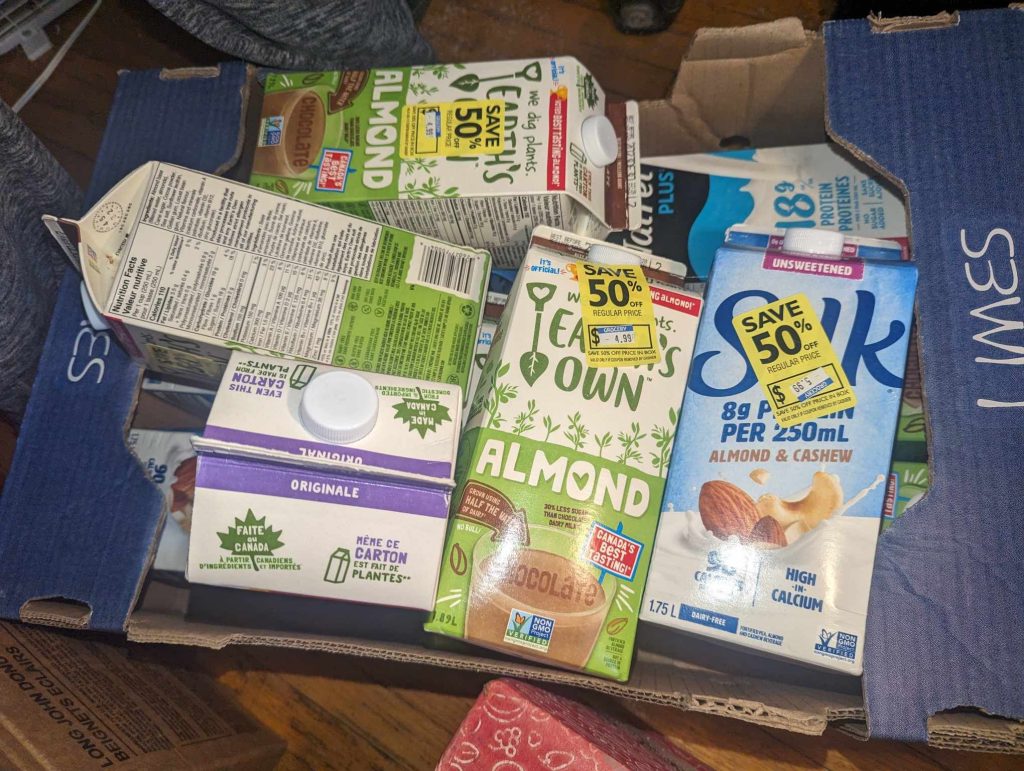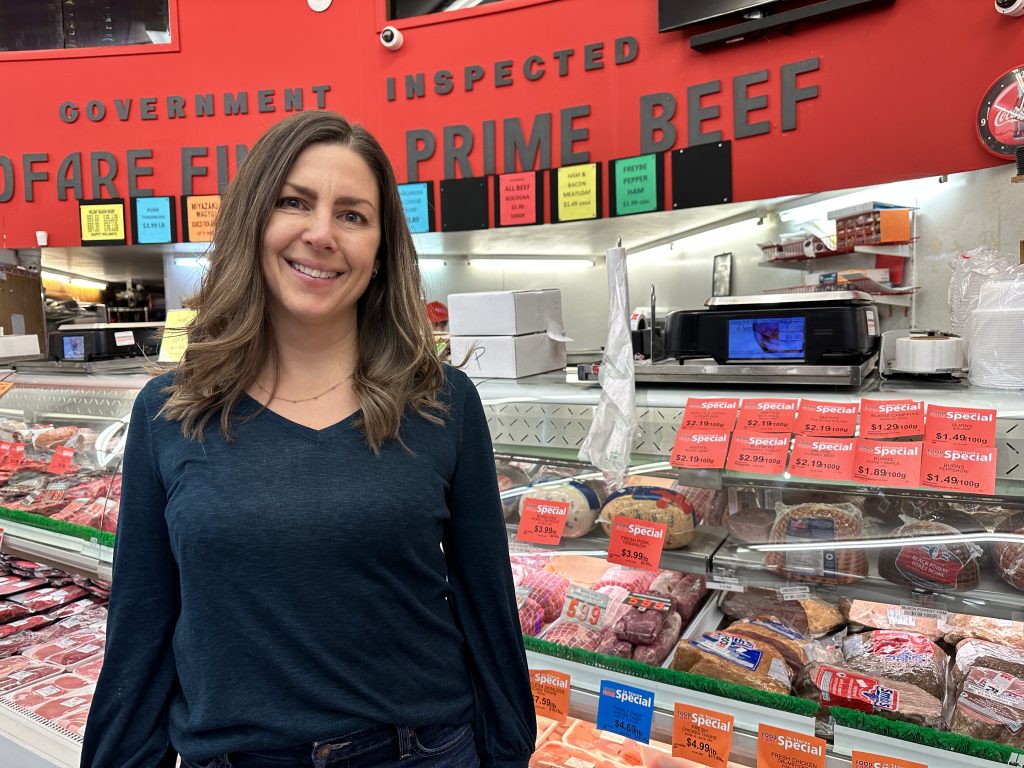Changing shopping habits, mutual aid among ways Winnipeggers are cutting food costs

Posted January 4, 2024 4:07 pm.
Last Updated January 4, 2024 10:21 pm.
With food costs continuing to rise, Manitobans are finding ways to keep their families fed by stretching their dollars and looking for new resources to put food on the table.
“Every Saturday we do food boxes. We collect from various organizations and stores. There’s Costco, Gunn’s Bakery, The Leftovers Foundation, Harvest. All kinds of different organizations and business donate. A friend brings it, we collect it, we organize it and we get it out to the community. We feed probably about a dozen families a week,” said Kat Greer.
Winnipeggers Kat and Corey Greer live in the Weston neighbourhood. They say food insecurity is a big issue in the area. The Greers are part of a network of mutual aid, where community members come together and take care of each other in any way possible.

“I’m finding that more and more people are struggling to put food on their table. It’s very painful to see our community – and these aren’t necessarily people we know or know very well – but we can see that the community around us is having a much harder time providing for their families and feeding their kids,” said Kat Greer.
The Greers say many people rely on the donated food to make ends meet. Corey says the success of the network hinges on people contributing what they can, especially during these difficult times of inflation.
“Not only do we simply try to take ourselves and our family, but we also try to take care of other people’s families. Other people take care of us as well,” said Corey Greer.
Janine LaForte, a registered dietitian with Real Life Nutrition, added, “I think people just need some ways to save money.”
LaForte says her family of five has changed their grocery shopping habits to try and counter rising costs. She says she looks at sales but also finds alternatives to pricey items.
“We do things like incorporate more pulses, so beans, letils, chickpeas – those kinds of things into our meals, which is a super economical protein source.”
LaForte also looks for seasonal produce, or frozen alternatives if what she needs isn’t available.

“I always am aware of the prices I’m paying when I’m shopping. In terms of produce for instance, I would never go and buy fresh berries this time of year. For one, they’re not as fresh, and … the price is crazy. If I’m really wanting to have some berries in my diet or to feed my family I would look at frozen varieties. You can get those all year round and they are pretty much standard price most of the year. You can also find them on sale often as well,” said LaForte.
“Frozen varieties are just as nutritious as the fresh. And actually because of where we live here in Winnipeg, sometimes they’re even better frozen because they’re picked and they are processed at the peak of their freshness.”
LaForte says she also shops at stores which offer money-saving incentive programs.
“There’s lots of stores that have different incentive programs. So if you sign up, all you need to do is scan your card every time you shop and then that translates into free money for groceries later on,” said LaForte.
The Greers say it’s important to ensure food insecurity is minimized, and they’ll continue helping their community however they can.
“Once you start taking the steps to see these needs, reach these needs and fulfill these needs, you can’t go back. Ignorance is bliss kind of. We can’t go back to a day where we didn’t know that people were hungry,” said Kat Greer.
LaForte adding, “Let’s just hope that things turn around soon.”
WATCH: Dietitian Janine LaForte offers tips on cost-saving at the grocery store.
Find LaForte’s budget-friendly recipe booklet here.








